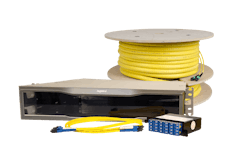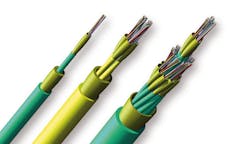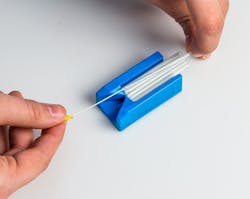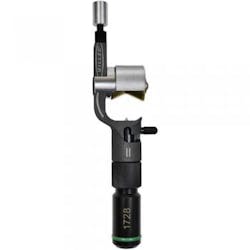Cabling Innovators Silver awards demonstrate marked improvements, developments
A Silver level Cabling Innovator Award is granted to an innovation that has resulted in not just incremental improvement, but in marked improvement over previous methods, approaches, or use of systems and products.
Here are the six 2020 Cabling Innovators Silver Award honorees.
CommScope’s M-LOC Cluster Connector System installs with a single push/lock motion that reduces installation time by more than 75% and uses a keyed feature that ensures accuracy in port mating—saving installation time, cost, and worries. The M-LOC jumper uses a metal/polymer construction for durability that additionally reduces site rental fees with a lighter-weight design. The M-LOC cluster jumper family supports connectivity to 4 or 5 antenna ports with a single latching connection, while offering excellent performance for both time division duplex (TDD) and future frequency division duplex (FDD) cluster connector systems.
The MIC 250 2.0 cable from Corning is optimized for splicing and utilization with pigtail cassettes. The cable’s design uses subunits made up of 12x250-µm colored fibers. This design helps address challenges arising from the neverending need for increasing bandwidth, specifically including the growing popularity of pigtail splicing with cassettes. “Although tight-buffered cables can be fusion spliced to other tight-buffered cables as well as loose-tube cables, splicing tight-buffered fiber to loose-tube fiber is inefficient,” Corning explains. “Fusion splicing tight-buffered cables into cassettes using 250-µm fibers requires arduous processes.” Historically, an indoor loose-tube fiber cable optimized for fusion splicing with cassettes has not been widely available. Corning gathered installer feedback on the use of splice cassette installation with tight-buffered cabling solutions, and used that feedback to drive the creation of MIC 250 2.0, a splice-optimized indoor plenum loose-tube cabling solution.
The PSI-15 protection sleeve insertion tool from Jonard Tools is designed to make loading protection sleeves onto fiber a quick and easy process. Inserting fiber into a protection sleeve is a precision process. The 250-µm fiber must fit into a sleeve opening that is between 1 and 2 mm. Aligning the fiber to the sleeve can be tedious. The PSI-15 can store 15 protection sleeves. Its conical fiber-feed surface guides fiber directly to the protection sleeve, and the tool facilitates fiber loading by providing a guide for the fiber to load directly into the protection sleeve. When one sleeve is loaded and removed from the tool, another sleeve falls into place.
Legrand’s Infinium Quantum end-to-end fiber system provides a 0.75-dB channel link loss—a 67% improvement over standard systems and a 55% improvement over other ultra-low-loss optical fiber systems available. Available in both singlemode and multimode, Infinium Quantum was exclusively designed to allow a fast, reliable migration path to 400G and beyond by reducing or eliminating the need to replace cabling components. In addition to its low total loss (0.75dB total channel connection loss for both SM and MM; 49dB total channel connection return loss for SM; 34dB total channel connection return loss for MM), the system reduces the need for fusion splicing to obtain low link loss and maintains the ability to add crossconnections, signal drops, splitting, or switching components into the link.
J-Tray is a UL-listed tray that installs using MonoSystems’ J-Hook system, which allows the designer or installer to add pathways easily. J-Tray is an aesthetic, organized alternative to conduit for low-voltage cabling in open ceilings, MonoSystems explains. It provides a solution that is often missing from other cable-support systems. “Many designers are specifying J-Tray as an alternative to extra-large conduit, given its ability to easily add tiers using our J-Hooks,” MonoSystems explains. J-Tray comes in mill finish aluminum and may be painted for interior design aesthetics or to help with pathway identification.
The Miller MB-07 Cable Slitter from Ripley Tools is designed specifically for Corning’s RocketRibbon Extreme Density Cable, which has a fiber count of 1728. “Corning required a reliable tool to access fiber in midspan applications with higher repeatability than using a field knife, which has the potential to damage cable and fiber,” Ripley explains. The MB07-7000 midspan access tool has been certified by Corning for use with the RocketRibbon 1728. The slitter is constructed with an aluminum body; it enables end or midspan cable preparation to access subunits and ripcords without damaging the fiber. The design includes a safety shielded factory-set tool steel blade with a unique finger “comfort grip” and brass guide wheel to reduce drag while performing longitudinal cuts.






